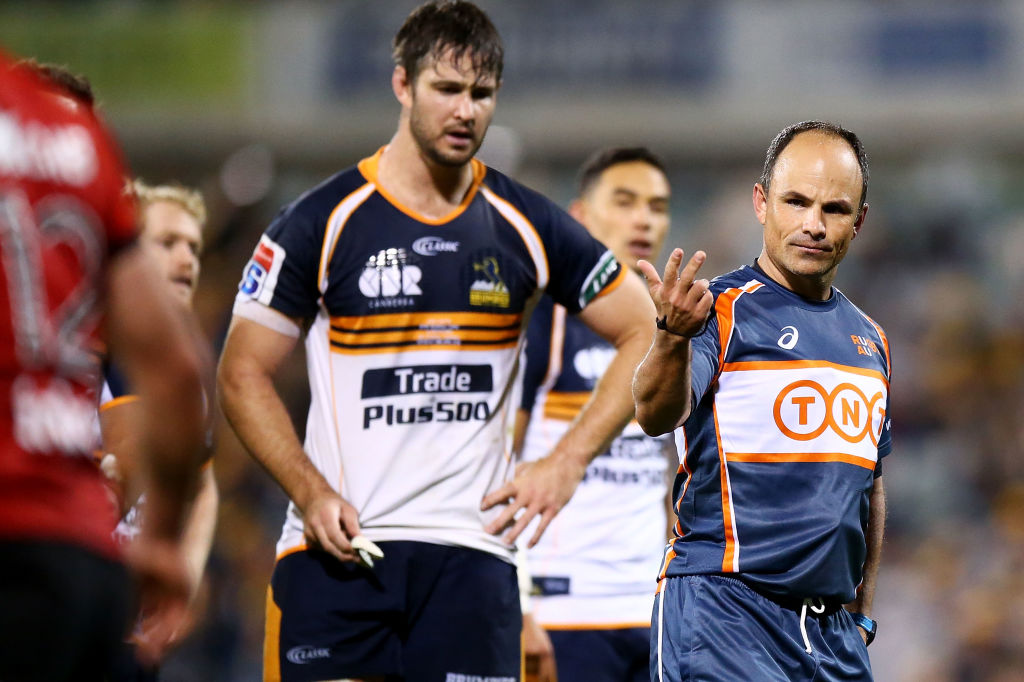By Jeremy Guscott
AUSTRALIAN Rugby Union is in a tricky situation in trying to keep the game sustainable by attracting a bigger spectator base, including young players and supporters. I don't like change for the sake of change, but I like it when it makes sense.
However, I'm not convinced that the closed law trials which World Rugby have allowed Western Force to introduce for their home matches in the ‘World Rugby Series' are any sort of answer. These include a seven-point try – nine points if converted – if it is launched from inside the attacking side's own 22 with no break in continuity; flashing lights on posts when one is scored; the opportunity to make 12 substitutions throughout the match; line-outs to be taken as quickly as a team wants, and scrums that last no longer than a minute.
The game in Australia is in trouble, and they are saying that it is because Rugby Union has become too stale, with predictability of possession a key factor.
The nine-point try and the flashing lights is a bit of a gimmick, but it misses the point that the most important element in the game is the breakdown, and if it is sorted out everything will flow from it.
We have to make the breakdown more competitive because the current application of the laws have made it so hard to win the ball from the attacking team. If we fixed it there would be no need for nine-point tries.
Also, I would totally scrap the idea of increasing the number of subs, because all that would do is give us more of what we already have. We already have players who are so big they cannot last a full 80 minutes, coming on for short periods, and since the bench was increased to eight the level of injuries in the game has been going upwards at some rate. Increasing the number of replacements to 12 would only make it worse.
What we have to ask is why the breakdown has become more uncontested than it has ever been? These days in the pro game most teams wait for their opponents to make mistakes – but with teams like Exeter mistakes have become a rarity.
The way Exeter use the pick-and-go is very effective, but it is also borderline illegal because of the extent to which players supporting the carrier seal off the ball, making it almost impossible for the defending side to contest for it.
Our aim has to be to make the game more about attrition, with more players playing for 80 minutes, fewer subs, and getting back to players of all shapes and sizes – including smaller opensides who can get in and steal the ball.
One of the big problems we face is that referees are being directed more by coaches these days than they are by the laws of the game, with the breakdown and the scrum areas of particular concern.
The idea of having a dispensation whereby referees allow the scrum-half to step half a metre to his own side of the tunnel before putting the ball in is rubbish. Put it into the tunnel, and put it in straight so that it can be hooked. In addition, make sure that there is no pushing before the ball has been put in, and make props scrum with shoulders above the hips.
If referees applied those laws most scrums would be over within a minute in any case, and we could even see more variety returning to the game with the reintroduction of back row moves off the scrum. These used to be an important tactical part of the game, but have almost disappeared.

Which brings us back to the breakdown. It always used to be the biggest difference between Rugby Union and Rugby League, but now that there is predictability of possession it has almost become like Rugby League.
What we have to recognise is that if we make the breakdown more competitive – as it used to be – then we will get tries being scored from inside the attacking side's 22, or even from the in-goal area, like the one sparked by Serge Blanco at Twickenham against the 1991 England Grand Slam team that I was part of.
If the gimmicky stuff helps in Western Australia, fine, but if they want a better game they should reduce the subs and make the breakdown more competitive.
The reality is that the world game is not struggling to the extent that it is in Australia, but even so this should be a light-bulb moment for Rugby Union, and for World Rugby, that the breakdown has to be contestable.
Health and safety issues have made it difficult for rucking to be reintroduced, because one bad ruck injury and there would be an outcry. However, I believe that it should come back, because done properly it is safe and makes the breakdown more dynamic. In my day players who chose to lie on the ball and kill it got rucked out – and accepted it – but my view is that if a player killed the ball these days referees would see it early and whistle before they were rucked.
We have to recognise that Rugby Union used to be more of a contest, and that the changes that have been made at the breakdown, at the scrum, and in terms of the number of substitutes have had a significant effect by making it more predictable, and less attractive.
Originally we thought the 20 stone players smashing into each other was great, but now all the big guys are so equal in size and power, with reinforcements of the same size coming off the bench, it has become a grind in which it is difficult to wear down the opposition.
It also seems that if some coaches do not get guaranteed ball at the breakdown or set piece they take the route of telling refs that they are killing the game, rather than working out how they should adapt and make their teams more competitive.
This dossier stuff, with each referee being analysed by teams, is a sign of the increasing pressure that referees are under in the pro game. The very best referees get their reputation because they are more consistent than most, but it is wrong that we should have a handful like Nigel Owens, JP Doyle, Wayne Barnes, Romain Poite and Jerome Garces, who are out on their own.
What the game requires is at least 15 top referees who apply the laws uniformly and consistently so that every coach and player knows what they are getting every match, instead of having individual referee dossiers which highlight how they apply the laws differently.
I'm not a huge fan of the latest Aussie experiment because more than anything I want the game to be true to its heritage and refereed as it used to be. If we fix the breakdown, reduce substitutions, and sort out the scrum, our game will be one hell of a spectacle.


























